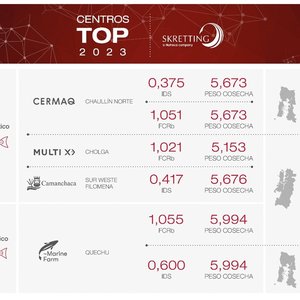Wing-Keong Ng,Chik-Boon Koh, Chaiw-Yee Teoh,Nicholas Romano
Fish Nutrition Laboratory, School of Biological Sciences, Universiti Sains Malaysia, Penang 11800, Malaysia
Abstract
The threat of disease in the aquaculture industry, coupled with greater restrictions or ban on antibiotic use, has increased interest in evaluating antibiotic alternatives. A promising alternative is organic acids, which have been used for decades in the livestock feed industry as an antimicrobial and growth promoter. However, very limited information exists on their applications to the shrimp aquaculture industry. The aim of the current study was to examine the potential beneficial effects of a novel microencapsulated organic acid blend (OAB) to the production of tiger shrimp, Penaeus monodon, in earthen ponds at a commercial farm when fed commercial feeds without (Diet A) or with (Diet B) organic acid supplementation at 2% OAB throughout the grow-out period. Farm-raised shrimp were randomly sampled and transferred to the laboratory to examine any effects on nutrient utilization, resistance of shrimp to Vibrio harveyi and associated hepatopancreatic histopathology and phenoloxidase (PO) activity. Results showed that after 22 weeks of culture in ponds, shrimp growth was similar between treatments. Lower nitrite-N and nitrate-N concentrations in the pond water indicated potential improved protein utilization from shrimp fed Diet B. This was supported by data from the digestibility trial, demonstrating crude protein, but also dry matter, ash and phosphorous utilization was significantly enhanced (P < 0.05). Total viable bacteria and presumptive Vibrio spp. counts were lower at the end of the grow-out period in the pond water of shrimp fed Diet B. Shrimp fed Diet B showed significantly higher survival to V. harveyi challenge, likely due to enhanced PO activity and less hepatopancreatic damage. Total viable bacterial and Vibrio counts in the hepatopancreas of shrimp fed Diet B were significantly lower compared to Diet A. This study provides the first reported data on the use of dietary organic acids in a commercial shrimp farm setting. The enhancement to nutrient utilization may reduce feeding costs and improve water quality while the higher resistance of shrimp to pathogenic bacteria such as Vibrio spp. may provide shrimp farmers with an effective method to mitigate disease outbreaks in the global shrimp aquaculture industry.
Aquaculture
Volume 449, 1 December 2015, Pages 69–77
Proceedings of the 16th International Symposium on Fish Nutrition and Feeding
doi:10.1016/j.aquaculture.2015.02.006
Download as PDF from link below or read html version.







